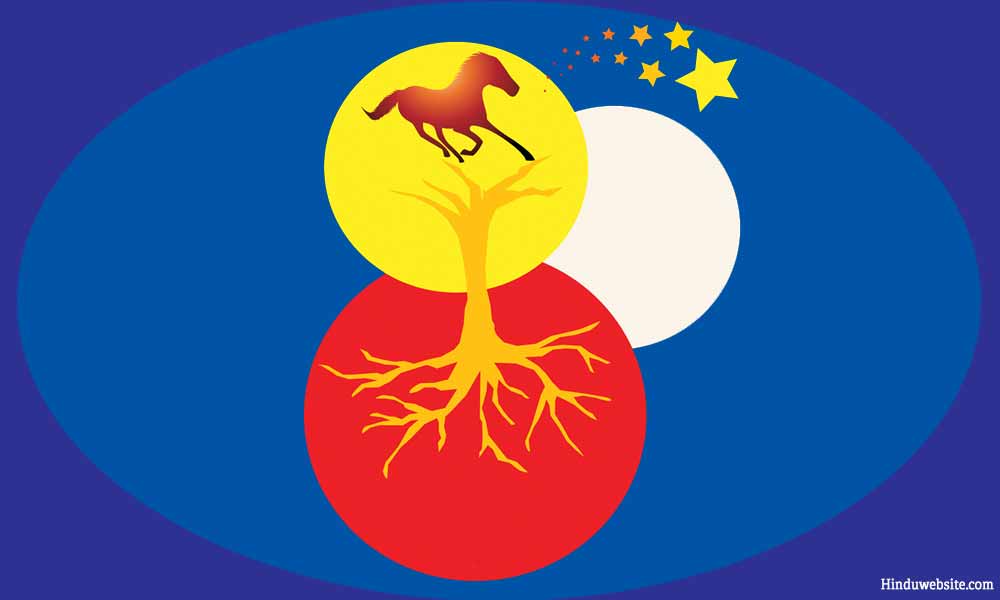
Brihadaranyaka Upanishad, Chapter 1.1.2

2. ahar va asvam purastan mahima nvajayata. tasya purve samudre yonih, ratrir enam pascan mahima nvajayata, tasyapare samudre yonih, etau va asvam mahimanav abhitah sambabhuvatuh hayo bhutva devan avahat, vaji gandharvan, arvasuran, asvo manusyan; samudra evasya bandhuh, samudro yonih.
Meaning
The golden sacrificial vessel called Mahiman placed in front of the horse is clearly the day. Its source is (in) the eastern sea. The night is the silver sacrificial vessel called Mahiman placed behind the horse. Its source is (in) the western sea. These two-called Mahiman appeared on both sides of the horse. As a vehicle, the horse became Haya for the gods, Vaji for the celestial beings, Arva for the demons and Asva for the humans. The sea is its relative and the sea is its womb.
Notes
In the previous verse, the emphasis was on the various bodily parts of the sacrificial horse, which is compared to Prajapati. Here it is on the ritual elements or utensils used in the sacrifice. The utensils are not part of Prajapti, but of the Universal Self (Brahman), represented here as the ocean itself. Those who are familiar with the creation stories in the Puranas know that Prajapati (Brahma) arises from the Navel of Manifested Brahman who rests on the waters on a giant serpent.
This verse refers to the two sacrificial cups, usually made of gold and silver, placed in the front and back of the sacrificial horse. The gold cup is compared to the day because it is the color of the sun and the silver cup to the night because it is the color of the moon. The horse represents the body of the Cosmic Self as well as all the embodied beings. The body is the vessel for all beings and goes by different names in different worlds. Hence, it is identified with different names in relation to different worlds. Shankara interpreted samudra as the Supreme Self and translated the last line as, "The Supreme Self is its stable and the Supreme Self (or the sea) is its source.”
Suggestions for Further Reading
- Vidya and Avidya in Brihadaranyaka Upanishad
- The Wisdom of the Isa Upanishad
- Isa Upanishad On The Importance Of Duty
- Jnana, Knowledge in Hinduism
- Wisdom of the Katha Upanishad
- Kena Upanishad on the Limits of Knowledge
- Self-knowledge Beyond the Mind
- Self-Realization, Atma Bodha, in Hinduism
- What You can Learn from the Isa Upanishad
- The Origin And Development Of Karma Doctrine In Hinduism
- The Wisdom of the Upanishads, Main Page
- Brahman, The Highest God Of Hinduism
- Essays on The Upanishads
- Upanishads and Their Philosophy - Links
- Introduction to the Upanishads of Hinduism
- Minor Upanishads
- Essays On Dharma
- Esoteric Mystic Hinduism
- Introduction to Hinduism
- Hindu Way of Life
- Essays On Karma
- Hindu Rites and Rituals
- The Origin of The Sanskrit Language
- Symbolism in Hinduism
- Essays on The Upanishads
- Concepts of Hinduism
- Essays on Atman
- Hindu Festivals
- Spiritual Practice
- Right Living
- Yoga of Sorrow
- Happiness
- Mental Health
- Concepts of Buddhism
- General Essays